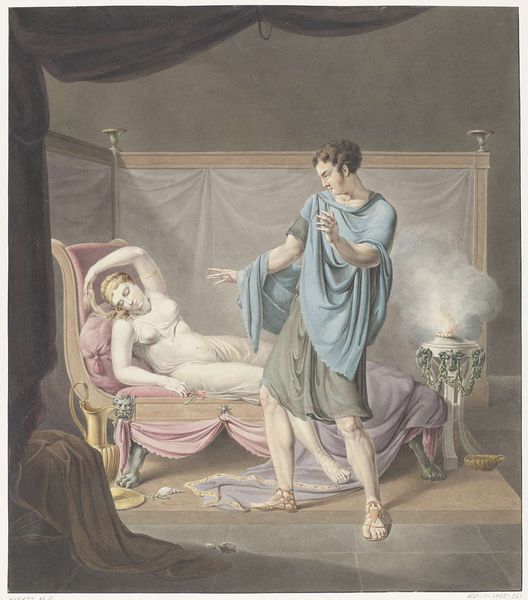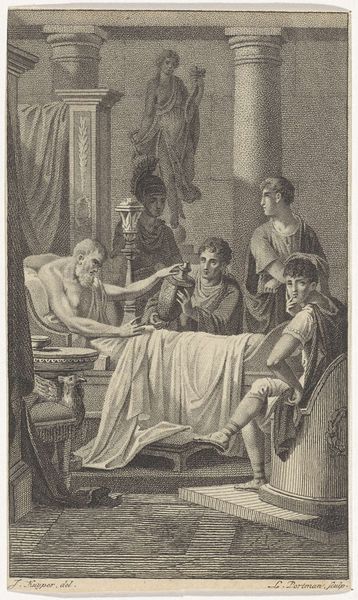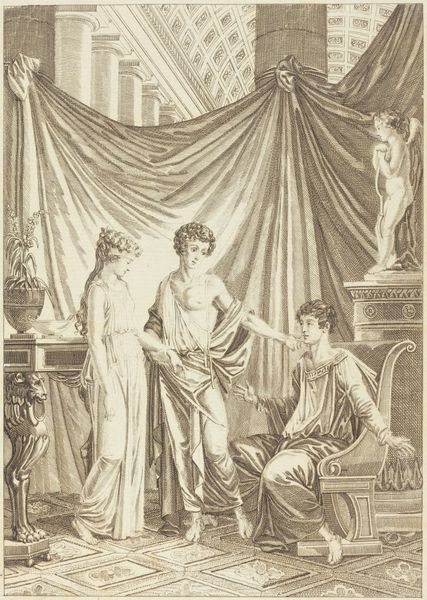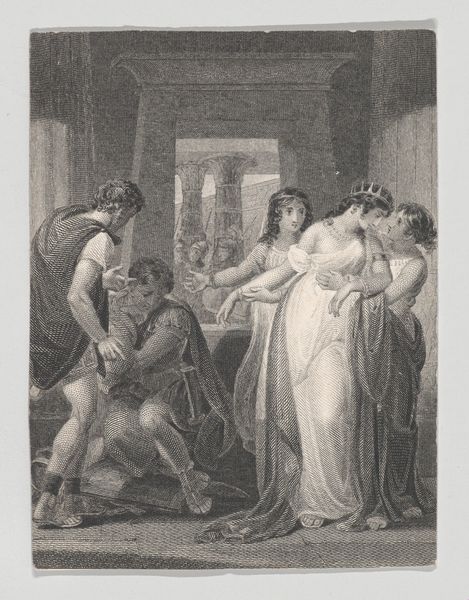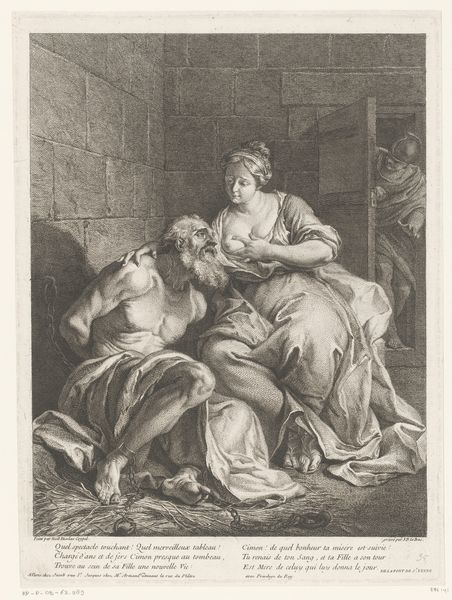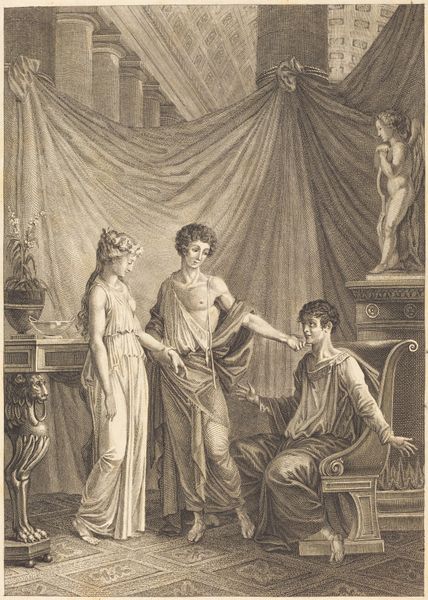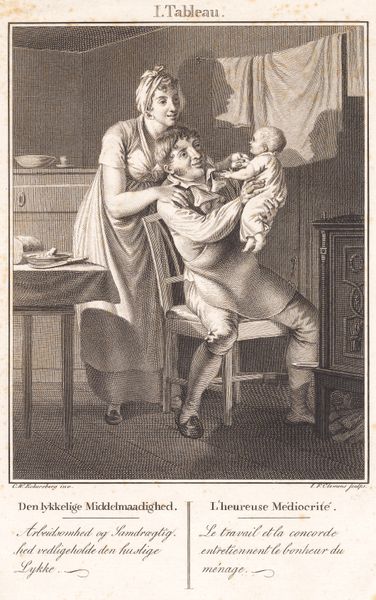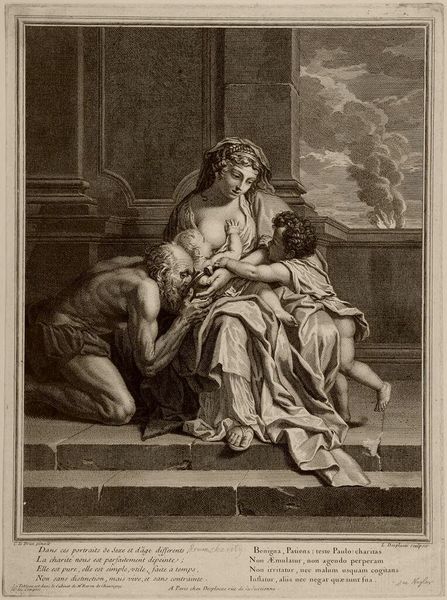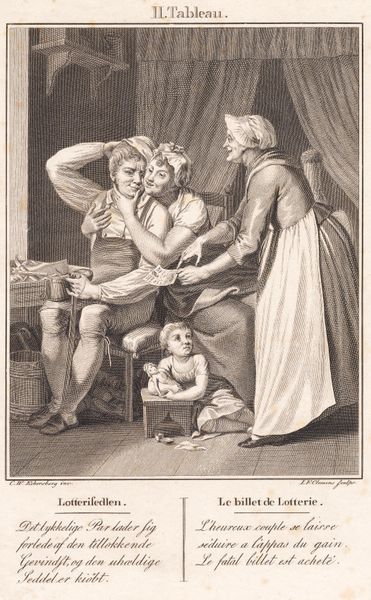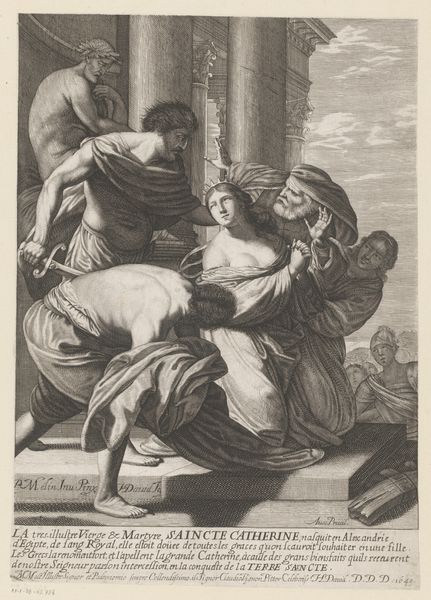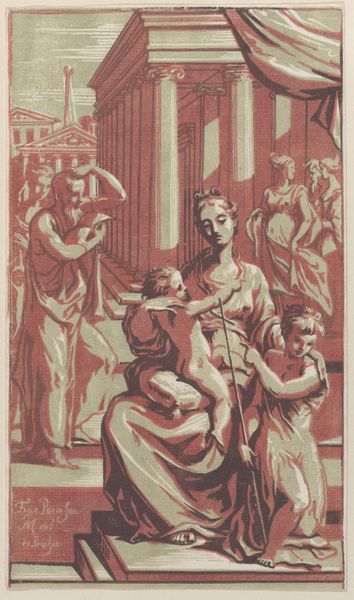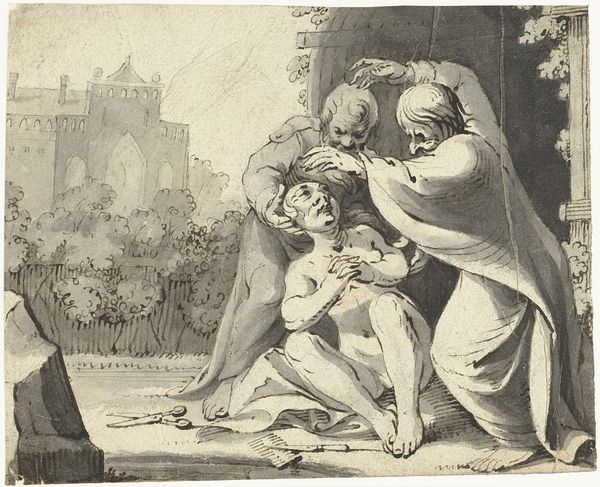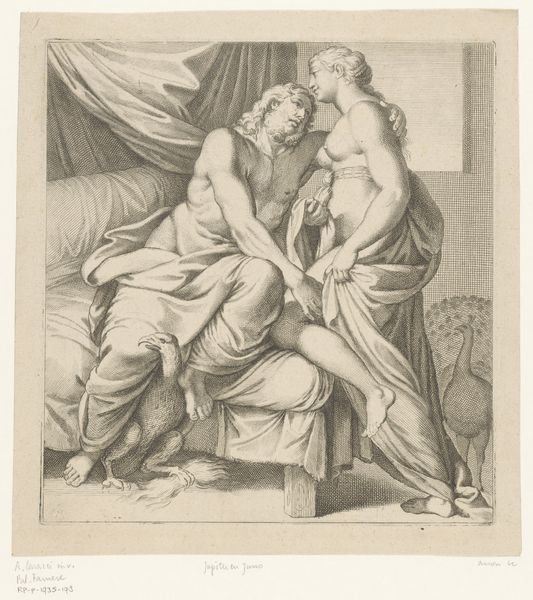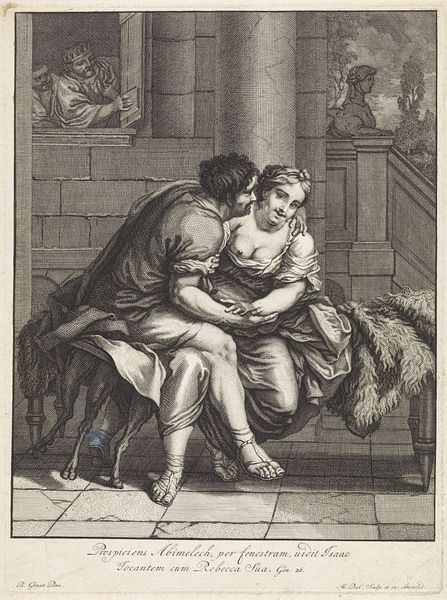
Philea tekent het portret van haar geliefde Ariston met behulp van schaduw van zijn profiel op muur 1809
0:00
0:00
tempera, painting
#
portrait
#
neoclacissism
#
tempera
#
painting
#
figuration
#
historical fashion
#
romanticism
#
history-painting
Dimensions: height 682 mm, width 497 mm
Copyright: Rijks Museum: Open Domain
Curator: Allow me to introduce you to Frederik Christiaan Bierweiler’s “Philea tekent het portret van haar geliefde Ariston met behulp van schaduw van zijn profiel op muur,” a tempera painting from 1809. You can currently find it here at the Rijksmuseum. Editor: Immediately, I am struck by how staged it all appears, almost theatrical. The drapery, the carefully positioned figures… It's very… deliberate. And the muted colors—dusty rose, soft greens—contribute to a sense of restrained drama. Curator: Yes, that theatricality speaks to the Neoclassical and Romantic styles that Bierweiler navigated. This painting presents a somewhat idealized vision of love and artistic creation within a historical setting. We see this subject come up a lot with those two movements intermingling. Editor: It's fascinating how he highlights the creative act itself, the tangible process of transforming a shadow into a lasting portrait. It really emphasizes the skill and craft inherent in image making. The shadow rendering of Ariston is rough, nearly appearing primitive—a direct contrast with the hyper-detailed appearance of the couple's robes. It's very meta. Curator: The composition reinforces that duality. Philea, illuminated and active, versus Ariston, passively cast in shadow. Consider also the intellectual context: this echoes the story of the origins of painting recorded by Pliny, who talks about how Dibutade traced the shadow of her beloved’s face before his departure. This gives a historical dimension to artistic creation and to the portrayal of affection. Editor: And look at the materiality: tempera allows for those very fine, delicate lines, enhancing that sense of idealization and classical perfection. And how the clothing—the light fabrics of Philea's dress, the heavier fabric draped around Ariston's shoulder—adds texture and weight, grounding the whole scene. It’s like it emphasizes a particular class status or the social implications that come with fine fabric production. Curator: Precisely, we can examine it through the lens of societal norms around gender and class. How does the portrayal of the woman as the active artist subvert expectations? And to whom was this artwork meant to appeal? Certainly a refined, educated audience aware of these artistic and historical references. Editor: Considering the artist's hand in manipulating the source material—paint, fabric, even the shadows—it raises a wider question of how artists frame narratives. I feel like the choice of fabrics adds layers to how stories are consumed through visual mediums. Curator: Yes, that makes the act of artistic creation less about just visual representation and more about communicating ideas. Very profound. Editor: Absolutely, a conversation about visual storytelling beyond just art. Thanks for the rich explanation.
Comments
No comments
Be the first to comment and join the conversation on the ultimate creative platform.
